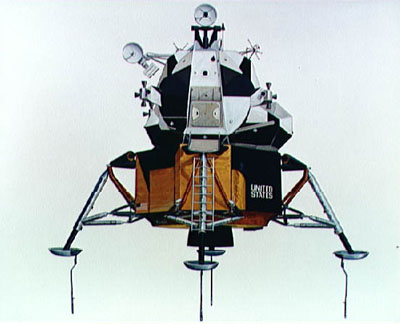 |
Apollo was a three-part spacecraft: the command module (CM), the crew's quarters and flight control section; the service module (SM) for the propulsion and spacecraft support systems (when together, the two modules are called CSM); and the lunar module (LM), to take two of the crew to the lunar surface, support them on the Moon, and return them to the CSM in lunar orbit. The flight mode, lunar orbit rendezvous, was selected in 1962. The boosters for the program were the Saturn IB for Earth orbit flights and the Saturn V for lunar flights.
The lunar module had two stages. The descent (lower) stage was equipped with a rocket motor to slow the rate of descent to the lunar surface. It contained exploration equipment and remained on the Moon when the astronauts left. The ascent (upper) stage contained the crew compartment and a rocket motor to return the astronauts to the orbiting command module. After the crew entered the command module for the trip back to Earth, the lunar module was released and eventually crashed into the Moon.
Transferred from the National Aeronautics and Space Administration.
Height: 7 m (23 ft) Width: 9.4 m (31 ft) Weight: 15,150 kg (33,450 lb) Manufacturer: Grumman Aerospace Corp. Launch vehicle: Saturn V
Text by Smitsonian Institution
|



